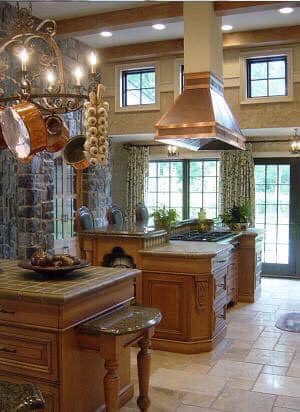How Does Recirculation Extractor Work?
A typical recirculating kit is comprised of carbon filter, clamps, deflector, and mounting material. The carbon filters absorb dirt and other odors extracted from the air in the kitchen. Clean air is blown back into the kitchen through a vent after all the air impurities have been absorbed by the carbon filters. For instance, a standard wall mount unit can have an embedded area in the duct cover so that the air taken in through the range hood can be sucked out through the vents. It is important to replace your carbon filters once they reach their limit of particle accumulation to help improve indoor air quality in your kitchen.

Factors to Consider When Purchasing a Recirculating Kit for Your Range Hood
- Compatibility
It is important to purchase a kit that is compatible with your existing range hood to avoid complications in suction and other functions. There are no one-size-fits-all range hood kits, so the installation process entirely depends on the model. It is important to consult with a professional before purchasing a recirculating kit to ensure it conforms to the design properties of your range hood model.
- Type of Filter
All recirculating kits in a range hood come with a filter. The two primary types of filters include aluminum mesh and carbon or charcoal filters. Aluminum mesh is washable, which means they can be cleaned and re-installed when necessary. On the other hand, carbon filters are non-washable and need to be replaced often when they reach their limit of particle accumulation.
- Efficiency
The type of recirculating kit you choose for the task can affect the efficiency of your range hood. It is important to ensure that everything is installed correctly according to the manufacturer’s recommendations. If the recirculating kit is not compatible with your range hood, you are likely to experience performance problems with your unit.
- Installation
Converting a ducted range hood to ductless is not an easy task, as it requires the skills and experience of a professional. Avoid skimping on costs with DIY projects as it may result in more damage than good. Hiring an expert to fix the recirculating kit for you can save you a lot in terms of time and money as they have the right tools and experience to get the job done.
Do I Need a Recirculating Kit for My Hood?
There is no need for installing recirculating kits in ducted range hoods since unwanted air from the kitchen is vented to the outside. Ductless range hoods filter the air in your kitchen without the need for a kit as they are designed for the same purpose. However, if you want to convert your ducted range hood into ductless then you may need a recirculating kit. This can help you recirculate the air in the kitchen without the need for venting outside.
Some of the reasons why homeowners may convert their range hoods from ducted to ductless are when venting outside is undesirable or not possible. Recirculating kits cost less to install, as there is no need for installing ductwork. Ducted range hoods use extraction as a way of getting rid of unpleasant odors and combustion products from your kitchen to the outside. After installing a recirculating kit, your range hood will recirculate the air in your kitchen by filtering it, then blowing it back into the room through vents.
It is important to hire a professional to install the recirculating kit in your range hood to avoid issues related to performance and efficiency. They are also in a better position to help you choose a kit that is compatible with your hood if you do not have an idea of what to look for. Some manufacturers often supply a template of how to install a recirculating kit so that you can ensure everything is done as required. If you are still unsure of whether to install a recirculating kit, then consider reaching out to experts for further advice.
